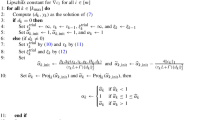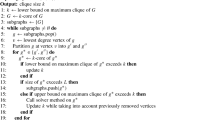Abstract
Tasks are units of sequential code implementing the system actions and executed concurrently by an operating system. Techniques have been developed to determine, at design time, whether a set of tasks can safely complete before their deadlines. Several models have been proposed to represent conditional executions and dependencies among concurrent tasks for the purpose of schedulability analysis. Among them, task graphs with cyclic recurrent behavior (i.e., those modeled with a single source vertex and a period parameter specifying the minimum amount of time that must elapse between successive activations of the source job) allow for efficient schedulability analysis based on the periodicity of the request and demand bound functions (rbf and dbf). In this paper, we leverage results from max-plus algebra to identify a recurrent term in rbf and dbf of general task graph models, even when the execution is neither recurrent nor controlled by a period parameter. As such, the asymptotic complexity of calculating rbf and dbf is independent from the length of the time interval. Experimental results demonstrate significant improvements on the runtime for system schedulability analysis.









Similar content being viewed by others
Notes
Tarjan’s algorithm Tarjan (1972) can decide in linear time whether a digraph is strongly connected.
It is sufficient to transform the task into a digraph with inter-release times equal to \(gcd(p(e): e \in \mathbb {E})\).
References
Anand M, Easwaran A, Fischmeister S, Lee I (2008) Compositional feasibility analysis of conditional real-time task models. In: Proceedings of the 11th IEEE international symposium on object oriented real-time distributed computing, pp 391–398, May 2008.
Axer P, Quinton S, Neukirchner M, Ernst R, Döbel B, Härtig H (2013) Response-time analysis of parallel fork-join workloads with real-time constraints. In: Proceedings of the 25th euromicro workshop on real-time systems, pp 215–224, July 2013.
Baccelli F, Cohen G, Olsder G, Quadrat J (1992) Synchronization and linearity: an algebra for discrete event systems. Wiley, New York
Baruah S (1998) Feasibility analysis of recurring branching tasks. In: Proceedings of the 10th Euromicro Workshop on Real-Time Systems, pp 138–145, June 1998.
Baruah S, Chen D, Gorinsky S, Mok A (1999) Generalized multiframe tasks. Real-Time Syst 17(1):5–22
Baruah S (2003) Dynamic- and static-priority scheduling of recurring real-time tasks. Real-Time Syst 24(1):93–128, January 2003.
Baruah S (2010) The non-cyclic recurring real-time task model. In Proceedings of the 31st IEEE Real-Time Systems Symposium, pp 173–182, December 2010.
Baruah S, Bonifaci V, Marchetti-Spaccamela A, Stougie L, Wiese A (2012) A generalized parallel task model for recurrent real-time processes. In Proceedings of the 33rd IEEE real-time systems symposium, pp 63–72, December 2012.
Balcer Y, Veinott AF (1973) Computing a graph’s period quadratically by node condensation. Discret Math 4(4):295–303
Bonifaci V, Marchetti-Spaccamela A, Stougie L, Wiese A (2013) Feasibility analysis in the sporadic DAG task model. In Proceedings of the 25th euromicro conference on real-time systems, pp 225–233, July 2013.
Charron-Bost B, Függer M, Nowak T (2011) On the transience of linear max-plus dynamical systems. Comput Res Repos (CoRR). arXiv:1111.4600 2011.
Dasdan A (2004) Experimental analysis of the fastest optimum cycle ratio and mean algorithms. ACM Trans Design Autom Electron Syst 9(4):385–418, October 2004.
Fersman E, Krcal P, Pettersson P, Yi W (August 2007) Task automata: schedulability, decidability and undecidability. Inform Comput 205(8):1149–1172
Floyd R (1962) Algorithm 97: shortest path. Commun ACM 5(6):345, June 1962.
Gavalec M (2000) Linear matrix period in max-plus algebra. Linear Algebra Appl 307(1–3):167–182, March 2000.
Gavalec M (2000b) Polynomial algorithm for linear matrix period in max-plus algebra. Central Eur J Oper Res 8(3):247–258, 2000.
Hartmann M, Arguelles C (May 1999) Transience bounds for long walks. Math Oper Res 24(2):414–439
Henia R, Hamann A, Jersak M, Racu R, Richter K, Ernst R (March 2005) System level performance analysis—the SymTA/S approach. IEE Proc Comput Digital Techn 152(2):148–166
Karp R (1978) A characterization of the minimum cycle mean in a digraph. Discret Math 23(3):309–311, 1978.
Künzli S, Hamann A, Ernst R, Thiele L (2007) Combined approach to system level performance analysis of embedded systems. In: Proceedings of the IEEE/ACM/IFIP international conference on hardware/software codesign and system synthesis, pp 63–68, September 2007.
Liu CL, Layland JW (January 1973) Scheduling algorithms for multiprogramming in a hard-real-time environment. J ACM 20(1):46–61
Norström C, Wall A, Yi W (1999) Timed automata as task models for event-driven systems. In: Proceedings of the 6th conference on real-time computing systems and applications, pp 182–189, 1999.
Mok AK, Chen D (1996) A multiframe model for real-time tasks. In Proceedings of the 17th IEEE real-time systems symposium, pp 22–29, December 1996.
Molnárová M (2003) Computational complexity of nachtigall’s representation. Optimization 52(1):93–104, 2003.
Molnárová M (2005) Generalized matrix period in max-plus algebra. Linear Algebra Appl 404:345–366, July 2005.
Moyo NT, Nicollet E, Lafaye F, Moy C (2010) On schedulability analysis of non-cyclic generalized multiframe tasks. In: Proceedings of the 22nd euromicro conference on real-time systems, pp 271–278, July 2010.
Saifullah A, Agrawal K, Lu C, Gill C (2011) Multi-core real-time scheduling for generalized parallel task models. In: Proceedings of the 32nd IEEE real-time systems symposium, pp 217–226, December 2011.
Stigge M, Ekberg P, Guan N, Yi W (2011) The digraph real-time task model. In: Proceedings of the 16th IEEE real-time and embedded technology and applications symposium, pp 71–80, April 2011.
Stigge M, Ekberg P, Guan N, Yi W (2011b) On the tractability of digraph-based task models. In: Proceedings of the 23rd euromicro conference on real-time systems, pp 162–171, July 2011.
Stigge M, Yi W (2012) Hardness results for static priority real-time scheduling. In: Proceedings of the 24th euromicro conference on real-time systems, pp 189–198, July 2012.
Stigge M, Yi W (2013) Combinatorial abstraction refinement for feasibility analysis. In Proceedings of the 34th IEEE real-time systems symposium, pp 340–349, December 2013.
Tarjan, R E (1972) Depth-first search and linear graph algorithms. SIAM J Comput 1(2): 146–160, 1972.
Thiele L, Chakraborty S, Naedele M (2000) Real-time calculus for scheduling hard real-time systems. In Proceedings of the IEEE international symposium on circuits and systems, pp 101–104, 2000.
Wandeler E, Thiele L (2006) Real-time calculus (RTC) toolbox. http://www.mpa.ethz.ch/Rtctoolbox. Accessed 17 March 2014
Young N, Tarjant R, Orlin J (March 1991) Faster parametric shortest path and minimumbalance algorithms. Networks 21(2):205–221
Zeng H, Di Natale M (2012) Schedulability analysis of periodic tasks implementing synchronous finite state machines. In Proceedings of the 24th euromicro conference on real-time systems, pp 353–362, July 2012.
Zuhily A, Burns A (October 2009) Exact scheduling analysis of non-accumulatively monotonic multiframe tasks. Real-Time Syst 43(2):119–146
Author information
Authors and Affiliations
Corresponding author
Rights and permissions
About this article
Cite this article
Zeng, H., Di Natale, M. Computing periodic request functions to speed-up the analysis of non-cyclic task models. Real-Time Syst 51, 360–394 (2015). https://doi.org/10.1007/s11241-014-9209-5
Published:
Issue Date:
DOI: https://doi.org/10.1007/s11241-014-9209-5




